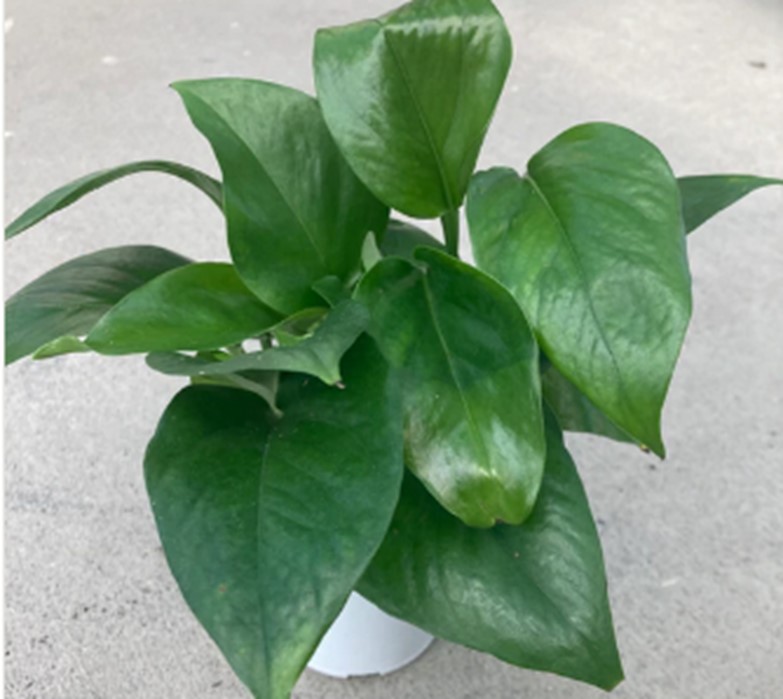Ivy Jade Pothos
Epipremnum aureum


Characteristics
- Type: Vine
- Zone: 10 – 12
- Height: 10 – 20 Feet
- Spread: 1 – 2 Feet
- Bloom: Rarely Flowers
- Sun: Part shade
- Water: Medium
- Maintenance: Low
- Leaf: Evergreen
Culture
Ivy Jade Pothos is best grown in bright indirect light or in part sun locations with protection from afternoon sun. It is well suited for use in hanging baskets or trained to grow up a trellis or other support structure. Use a peaty potting mix. Keep soil consistently moist during the growing season, but reduce watering somewhat from fall to late winter. Pinch stems to shape as needed. Easily propagated from stem cuttings. Ivy jade pothos has solid, dark green leaves. The leaves are narrower compared to those of some of the other pothos varieties. This is one of the best types of pothos for low light conditions, as it doesn’t have any variegation that is brought out by light
Noteworthy Characteristics
Jade Pothos is a climbing vine that produces abundant emerald green foliage. In its native habitat, it climbs tree trunks by aerial rootlets and tumbles along the ground as a ground cover, reaching up to 40’ or more in length. As a houseplant, it is usually grown much smaller, typically to 6-8’, although it may be featured in commercial plantings or in greenhouses in larger form. Young plants feature bright, waxy, 4 inch, heart-shaped green leaves On large mature vines, however, the leaves become much larger with deep lobes. Tiny arum family flowers are followed by small berries. Flowers and berries rarely appear on indoor plants.
Problems
Watch for fungal leaf spot and botrytis. Roots may rot in poorly drained soils. Scale, mealy bugs, and mites may appear.
Garden Uses
Good house plant for part-sun areas. Suitable for use in hanging baskets or trained to grow up a trellis or other support structure.